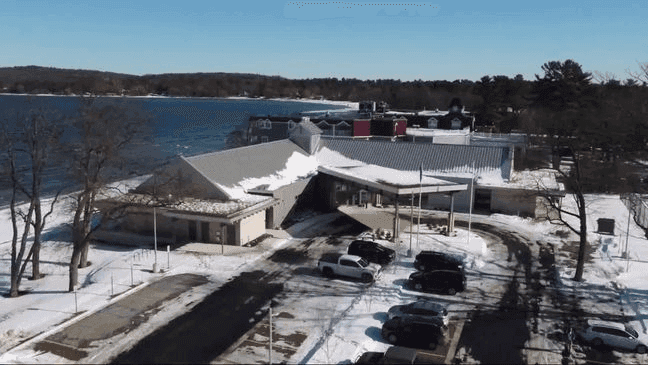Local Observatory Program Tackles Light Pollution, Offers Star Party
A notice posted Nov. 7, 2025 on the Ephemeris blog announced that the Grand Traverse Astronomical Society would present a program at Northwestern Michigan College's Rogers Observatory addressing light pollution, its causes, effects, and examples of appropriate lighting. The event, featuring Dr. Jerry Dobek and a possible star party if skies permit, was available in person and via Zoom and highlights issues that affect local residents health, wildlife, and public policy.
Listen to Article
Click play to generate audio

A community science outreach event for the Traverse City area was announced on Nov. 7, 2025 by the local Ephemeris blog, hosted by Bob Moler. The Grand Traverse Astronomical Society scheduled a program at Northwestern Michigan College's Rogers Observatory beginning at 7 p.m. The session was set to feature Dr. Jerry Dobek presenting on light pollution, including its causes, its effects, and examples of appropriate lighting, and a star party was planned if skies permitted. Attendance options included in person at the Rogers Observatory located south of Traverse City on Birmley Road and remote access via Zoom.
The program underscores a growing local interest in the interaction between night sky preservation, public safety, and municipal policy. Light pollution is not only an astronomical concern, it also intersects with energy use, wildlife behavior, and residents quality of life. For a county that markets its scenic qualities and outdoor recreation, conversations about outdoor lighting practices have practical implications for tourism, local ecosystems, and municipal budgets.
Institutionally, the event demonstrated how local educational and civic organizations can convene technical expertise for public benefit. Northwestern Michigan College provided the observatory venue, and the Grand Traverse Astronomical Society organized outreach to the community. The availability of a Zoom connection broadened access for residents who cannot travel to Birmley Road, making the technical briefing available to a wider audience and lowering the barrier to civic engagement around environmental and planning issues.
Policy implications of the topic discussed are relevant to municipal planning commissions and elected officials across Grand Traverse County. Decisions about street lighting standards, commercial outdoor illumination, and residential guidance typically rest with city councils and county planning bodies. Information shared at public science events can inform citizen comments to those bodies and influence the shape of local lighting ordinances or voluntary best practices that aim to reduce glare, save energy, and protect dark sky resources.
For residents, an event that combines an educational presentation with practical examples of appropriate lighting and an observational component provides both knowledge and motivation to participate in local governance. Whether through public comment, involvement in zoning reviews, or participation in neighborhood discussions, community members can use insights from experts to evaluate proposed developments and municipal projects that include outdoor lighting.
The notice on the Ephemeris blog served as the public announcement for the program, signaling ongoing collaboration between volunteer societies and academic institutions in bringing science to the public. The session offered a concrete opportunity for residents to learn about a technical subject that has direct bearing on local quality of life and to consider how collective choices about lighting shape the night for both people and nature.


